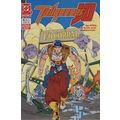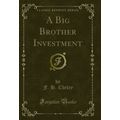Linnell, John - The Timber Wagon - art postcard (Medici, Guildhall)
- Condition : Used
- Dispatch : 2 Days
- Brand : None
- ID# : 200369348
- Quantity : 1 item
- Views : 174
- Location : United Kingdom

- Seller : justthebook (+1703)
- Barcode : None
- Start : Mon 19 Apr 2021 18:45:38 (BST)
- Close : Run Until Sold
- Remain : Run Until Sold
More Listings from This Seller view all
Seller's Description
- Art Postcard
- Work of art title: The Timber Wagon
- Artist (if known): John Linnell
- Media or other details: painting
- Publisher / Gallery: Medici Society / Guildhall Art Gallery [London]
- Postally used: no
- Stamp & postmark details (if relevant):
- Size: Modern
- Notes & condition details: bumped corner
NOTES:
Size: 'Modern' is usually around 6in x 4in or larger / 'Old Standard' is usually around 5½in x 3½in. Larger sizes mentioned, but if you need to know the exact size please ask as this can vary.
All postcards are not totally new and are pre-owned. It's inevitable that older cards may show signs of ageing and use, particularly if sent through the post. Any faults other than normal ageing are noted.
Stock No.: A1172
Please ask if you need any other information and I will do the best I can to answer.
------------------------------------------------
Postage and packing charge should be showing for your location (contact if not sure).
UK - PayPal, Cheque (from UK bank) or postal order
I will give a full refund if you are not fully satisfied with the postcard.
----------------------------------------------
John Linnell (16 June 1792 – 20 January 1882) was an English engraver, and portrait and landscape painter. He was a naturalist and a rival to the artist John Constable. He had a taste for Northern European art of the Renaissance, particularly Albrecht Dürer. He also associated with the amateur artist Edward Thomas Daniell, and with William Blake, to whom he introduced the painter and writer Samuel Palmer and others of the Ancients.
John Linnell was born in Bloomsbury, London on 16 June 1792.[citation needed], where his father was a carver and gilder. He was in contact with artists from an early age, and by the age of ten was drawing and selling portraits in chalk and pencil. His first art teacher was the American-born artist Benjamin West, and he spent a year in the house of the painter John Varley, where William Hunt and William Mulready were also pupils, and made the acquaintance of Shelley, Godwin and others. In 1805 he was admitted to study at the Royal Academy, where he obtained medals for drawing, modelling and sculpture. He was trained as an engraver, and executed a transcript of Varley's "Burial of Saul."[1]
View in Dovedale (1815)
In 1808, the 16-year-old Linnell moved into the house of the painter William Mulready, whose wife had accused him of infidelity with both other women and boys. Linnell's association with Mulready may have caused the breakup of Mulready's marriage.[2]
In later life Linnell occupied himself with the burin, publishing, in 1833, a series of outlines from Michelangelo's frescoes in the Sistine Chapel, and, in 1840, superintending the issue of a selection of plates from the pictures in Buckingham Palace, one of them, a Titian landscape, which he engraved in mezzotint. At first he supported himself mainly by miniature painting and execution of larger portraits, such as the likenesses of Mulready, Richard Whately, Peel and Thomas Carlyle. Several of his portraits he engraved in line and mezzotint.[1]
He painted many subjects like the "St John Preaching," the "Covenant of Abraham," and the "Journey to Emmaus," in which, while the landscape is usually prominent the figures are of sufficient importance to supply the title of the work. But it is mainly in connexion with paintings of pure landscapes that his name is known. His works commonly deal with some scene of typical uneventful English landscape, which is made impressive by a gorgeous effect of sunrise or sunset. They are full of true poetic feeling, and are rich and glowing in colour.[1]
Linnell commanded large prices for his pictures, and about 1850 he purchased a property at Redhill, Surrey, where he lived till his death on 20 January 1882, painting with unabated powers until within the last few years of his life. He devoted himself to painting landscapes notably of the North Downs and Kentish Weald.[3] His leisure was occupied with a study of the Bible in the original, and he published several pamphlets and treatises of Biblical criticism. Linnell was one of the best friends and kindest patrons of William Blake. He gave him the two largest commissions he received for single series of designs—£150 for drawings and engravings of The Inventions to the Book of Job, and a like sum for those illustrative of Dante Aligheri.[1]
He was a friend of the painter Edward Thomas Daniell. A blue plaque commemorates Linnell at Old Wyldes' at North End, Hampstead. The plaque mentions that William Blake stayed with Linnell as his guest.[citation needed]
Listing Information
| Listing Type | Gallery Listing |
| Listing ID# | 200369348 |
| Start Time | Mon 19 Apr 2021 18:45:38 (BST) |
| Close Time | Run Until Sold |
| Starting Bid | Fixed Price (no bidding) |
| Item Condition | Used |
| Bids | 0 |
| Views | 174 |
| Dispatch Time | 2 Days |
| Quantity | 1 |
| Location | United Kingdom |
| Auto Extend | No |




 for 1 item(s)
for 1 item(s)
















